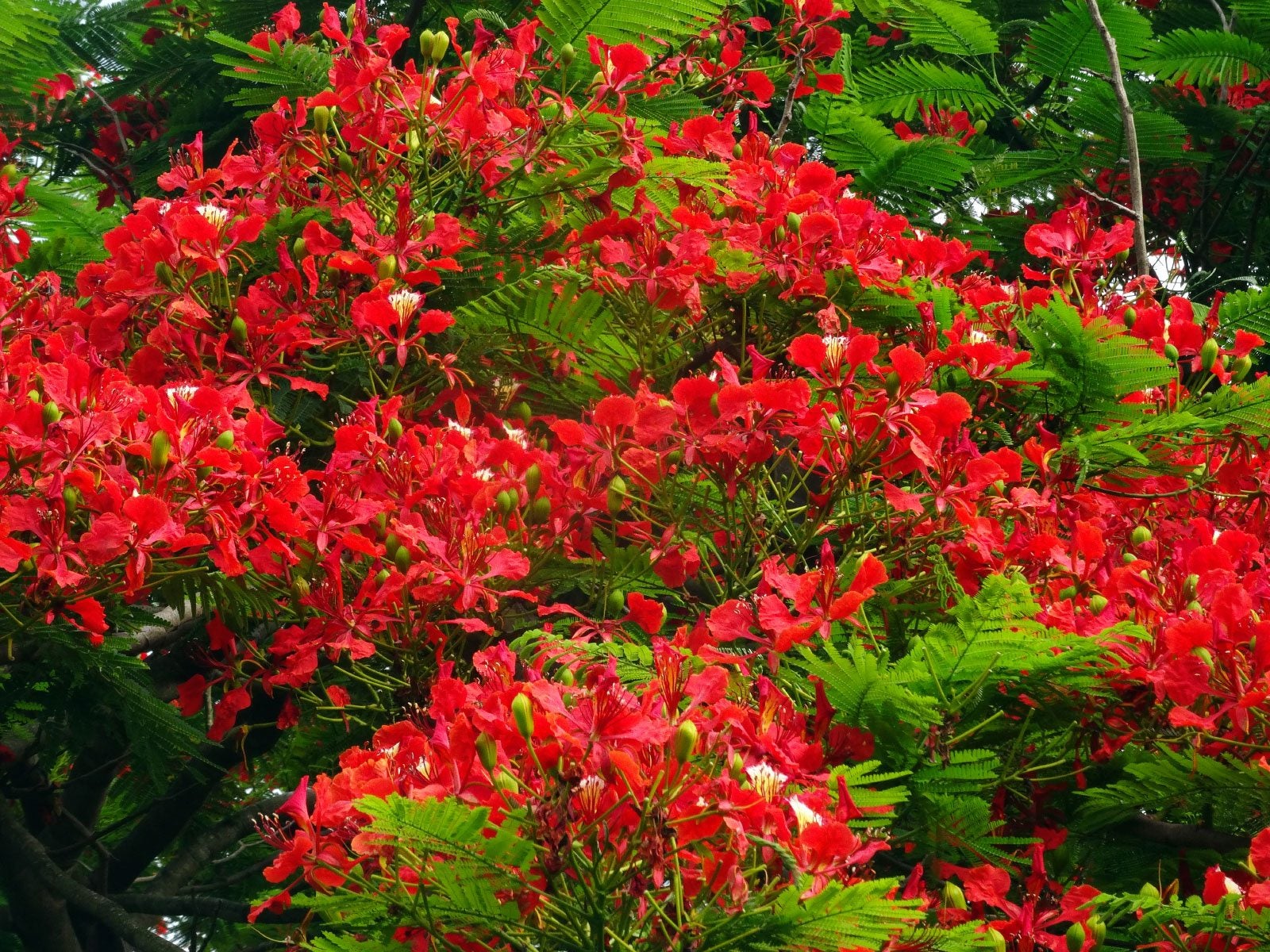What Is A Flame Tree: Learn About The Flamboyant Flame Tree


The flamboyant flame tree (Delonix regia) provides welcome shade and spectacular color in the warm climates of USDA zone 10 and above. Showy black seedpods measuring up to 26 inches (66 cm.) in length decorate the tree in winter. The attractive, semi-deciduous leaves are elegant and fern-like. Read on to learn more about flame trees.
What is a Flame Tree?
Also known as royal Poinciana or flamboyant tree, flame tree is one of the world's most colorful trees. Every spring the tree produces clusters of long-lasting, orange-red blooms with yellow, burgundy, or white markings. Each bloom, which measures up to 5 inches (13 cm.) across, displays five spoon-shaped petals. Flame tree reaches heights of 30 to 50 feet (9-15 m.), and the width of the umbrella-like canopy is often wider than the tree's height.
Where do Flame Trees Grow?
Flame trees, which don't tolerate temperatures below 40 degrees F. (4 C.), grow in Mexico, South and Central America, Asia, and other tropical and subtropical climates around the world. Although flame tree often grows wild in deciduous forests, it is an endangered species in some areas, such as Madagascar. In India, Pakistan, and Nepal the tree is known as “Gulmohar.” In the United States, flame tree grows primarily in Hawaii, Florida, Arizona, and southern California.
Delonix Flame Tree Care
Flame trees perform best in large, open spaces and full sunlight. Plant the tree in a big landscape where it has room to spread; the roots are sturdy enough to lift asphalt. Also, keep in mind that the tree drops spent blooms and seed pods that require raking. The flamboyant flame tree benefits from consistent moisture during the first growing season. After that time, young trees appreciate watering once or twice per week during dry weather. Well-established trees require very little supplemental irrigation. Otherwise, Delonix flame tree care is limited to an annual feeding in spring. Use a complete fertilizer with a ratio such as 8-4-12 or 7-3-7. Prune out damaged wood after blooming ends in late summer, beginning when the tree is about one year old. Avoid severe pruning, which can put a stop to blooming for as long as three years.
Sign up for the Gardening Know How newsletter today and receive a free copy of our e-book "How to Grow Delicious Tomatoes".

A Credentialed Garden Writer, Mary H. Dyer was with Gardening Know How in the very beginning, publishing articles as early as 2007.